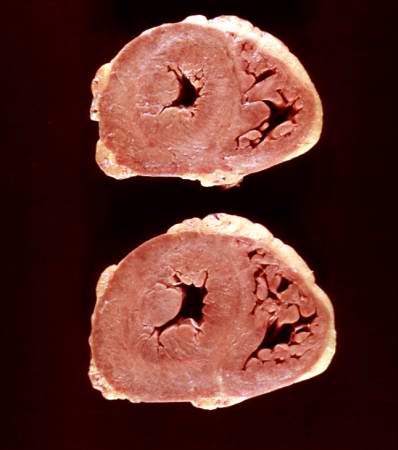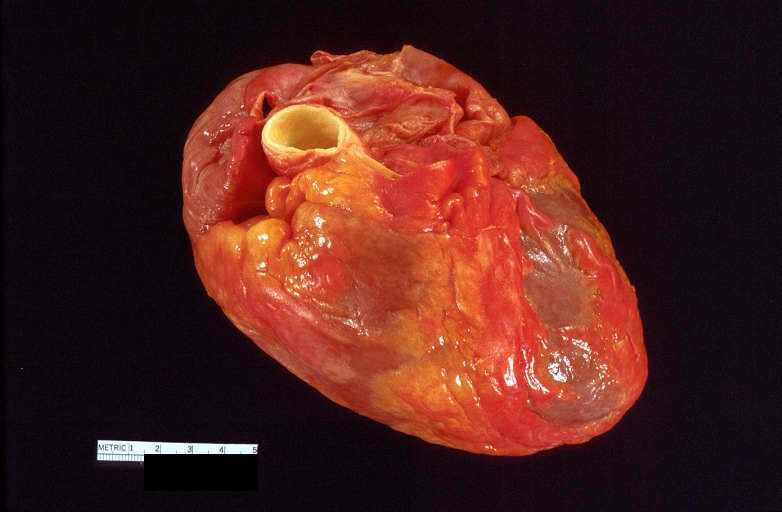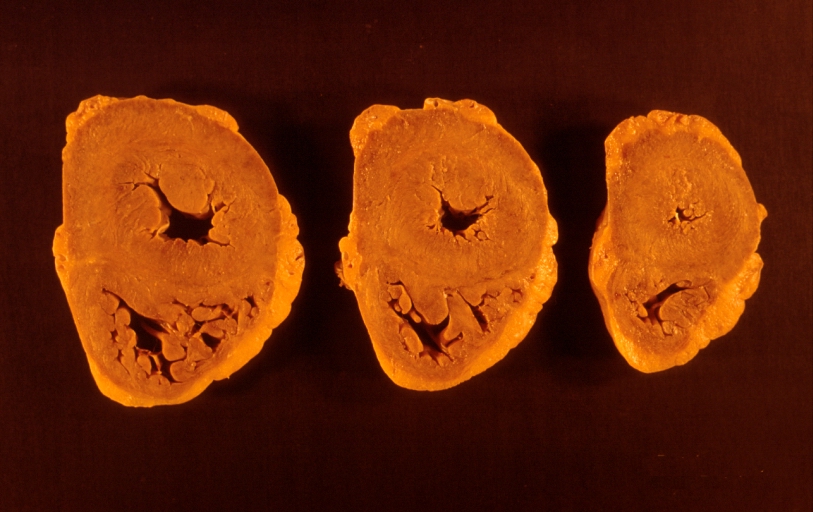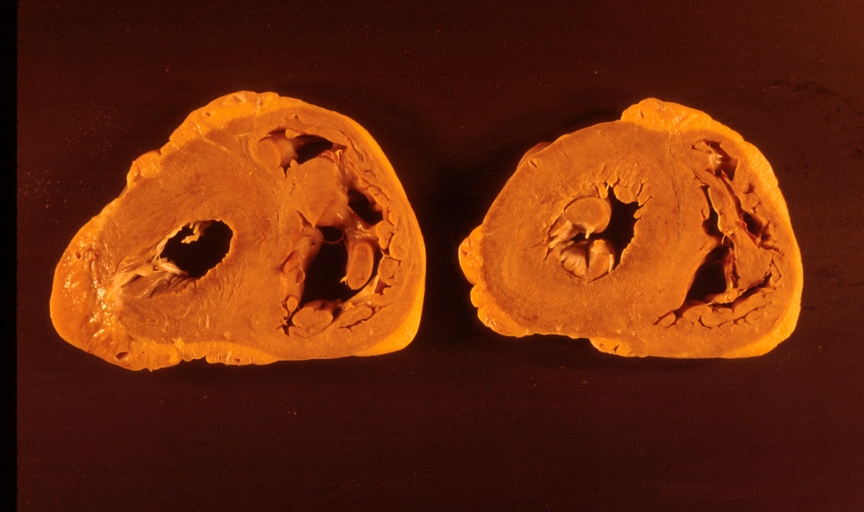The heart in progressive systemic sclerosis (scleroderma): Difference between revisions
Brian Blank (talk | contribs) No edit summary |
m (Robot: Automated text replacement (-{{SIB}} +, -{{EH}} +, -{{EJ}} +, -{{Editor Help}} +, -{{Editor Join}} +)) |
||
| (3 intermediate revisions by 2 users not shown) | |||
| Line 8: | Line 8: | ||
OMIM = 181750 | | OMIM = 181750 | | ||
MedlinePlus = 000429 | | MedlinePlus = 000429 | | ||
DiseasesDB = 12845 | | DiseasesDB = 12845 | | ||
MeshID = D012595 | | MeshID = D012595 | | ||
| Line 16: | Line 13: | ||
{{SI}} | {{SI}} | ||
{{CMG}} | {{CMG}} | ||
'''Associate Editor-In-Chief:''' {{CZ}} | |||
'''Assistant Editor-In-Chief:''' [[Brian Blank]] | |||
==Overview== | |||
Severe complications from Progressive Systemic Scleroderma ([[Scleroderma]]) can include: | |||
*Untreated [[high blood pressure]] that strains the heart | |||
*enlargement of the heart, which leads to [[heart failure]] | |||
*[[pericardial effusion]] | |||
*[[arrhythmias]] (both atrial and ventricular) | |||
*conduction system defects | |||
* | *valvular abnormalities | ||
* | *[[myocardial ischaemia]] | ||
* | *myocardial [[hypertrophy]]<ref name="pmid16606654">{{cite journal |author=Akram MR, Handler CE, Williams M, ''et al'' |title=Angiographically proven coronary artery disease in scleroderma |journal=Rheumatology (Oxford) |volume=45 |issue=11 |pages=1395–8 |year=2006 |month=November |pmid=16606654 |doi=10.1093/rheumatology/kel120|url=}}</ref> | ||
It's generally thought cardiac disease is a major cause of death from scleroderma, or that it often contributes to death. Conduction abnormalities, [[myocardial]] and [[pericardial disease]] disease may also be common. | It's generally thought cardiac disease is a major cause of death from scleroderma, or that it often contributes to death, though cardiac disease is only reported in about 10 percent of cases. Conduction abnormalities, [[myocardial]] and [[pericardial disease]] disease may also be common. Some have suggested a 'cardiac [[Raynaud's phenomenon]]' exists, but exactly how myocardial involvement develops in scleroderma is unclear. | ||
An angiography-based study of 172 patients has suggested patients who may have obstructive epicardial disease associated with scleroderma should be treated the same as patients without scleroderma.<ref name="pmid16606654">{{cite journal |author=Akram MR, Handler CE, Williams M, ''et al'' |title=Angiographically proven coronary artery disease in scleroderma |journal=Rheumatology (Oxford) |volume=45 |issue=11 |pages=1395–8 |year=2006 |month=November |pmid=16606654 |doi=10.1093/rheumatology/kel120 |url=}}</ref> | An angiography-based study of 172 patients has suggested patients who may have obstructive epicardial disease associated with scleroderma should be treated the same as patients without scleroderma.<ref name="pmid16606654">{{cite journal |author=Akram MR, Handler CE, Williams M, ''et al'' |title=Angiographically proven coronary artery disease in scleroderma |journal=Rheumatology (Oxford) |volume=45 |issue=11 |pages=1395–8 |year=2006 |month=November |pmid=16606654 |doi=10.1093/rheumatology/kel120 |url=}}</ref> | ||
| Line 55: | Line 58: | ||
{{Circulatory system pathology}} | {{Circulatory system pathology}} | ||
[[Category:Cardiology]] | [[Category:Cardiology]] | ||
Latest revision as of 16:49, 20 August 2012
Template:DiseaseDisorder infobox
Editor-In-Chief: C. Michael Gibson, M.S., M.D. [1] Associate Editor-In-Chief: Cafer Zorkun, M.D., Ph.D. [2] Assistant Editor-In-Chief: Brian Blank
Overview
Severe complications from Progressive Systemic Scleroderma (Scleroderma) can include:
- Untreated high blood pressure that strains the heart
- enlargement of the heart, which leads to heart failure
- arrhythmias (both atrial and ventricular)
- conduction system defects
- valvular abnormalities
- myocardial hypertrophy[1]
It's generally thought cardiac disease is a major cause of death from scleroderma, or that it often contributes to death, though cardiac disease is only reported in about 10 percent of cases. Conduction abnormalities, myocardial and pericardial disease disease may also be common. Some have suggested a 'cardiac Raynaud's phenomenon' exists, but exactly how myocardial involvement develops in scleroderma is unclear.
An angiography-based study of 172 patients has suggested patients who may have obstructive epicardial disease associated with scleroderma should be treated the same as patients without scleroderma.[1]
Pathology




References